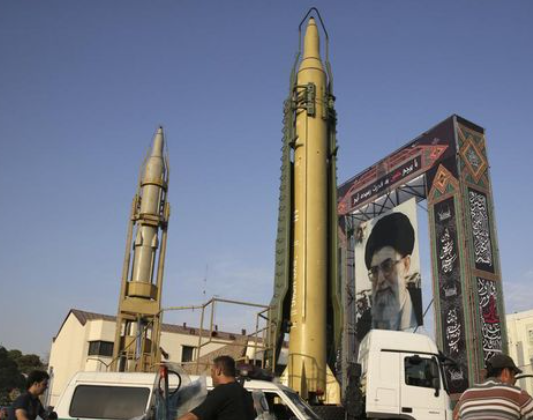
STRATEGIC ASSESSMENT. Despite the Biden administration’s diplomatic outreach to Iran, another cycle of Iran-backed attacks and U.S. retaliation is emerging, resembling patterns of U.S.-Iran clashes during the Trump administration. On March 3, 2021 Iran-backed Iraqi militias launched ten rockets on Ayn al-Asad base in Iraq, demonstrating that they were not deterred by the February 25, 2021 US strike on their warehouses in Syria. This took place at the same base on which over 100 U.S. military personnel suffered traumatic brain injury from an Iranian ballistic missile strike in January 2020 – an attack which itself was in response to the U.S. drone strike that killed Qasem Soleimani and the leader of the Katai’ib Hezbollah militia. The March 3 rocket attack resulted in no U.S. military casualties, but one U.S. contractor died of a cardiac event while taking cover. Pentagon press secretary John Kirby told reporters that the United States would “not shy” away from responding militarily to the latest militia action. A few days later, as an intended “deterrent” to Iran, the United States conducted another overflight of the Gulf by U.S.-based B-52 bomber aircraft. That mission, accompanied by aircraft from Israel, Qatar, and Saudi Arabia, was the second such overflight since the Biden administration took office on January 20. The latest U.S. military show of strength came on the last day of the Pope’s successful four-day visit to Iraq.
The attacks and responses deviate significantly from what was expected at the start of the Biden administration. In mid-February, the new administration publicly offered to begin talks with Iran to fulfill its stated resolve to rejoin the landmark 2015 multilateral Iran nuclear agreement, which the Trump administration exited. President Biden’s approach implies an intention to reduce U.S.-Iran tensions by easing U.S. sanctions on Iran and, after rejoining the nuclear pact, conducting follow-on talks on broader issues, including regional conflicts. Instead, the cycle of violence could derail the U.S. re-entry into the pact, and might have contributed to Iran’s February 28 statement that the “time is not right” to begin the proposed nuclear discussions.
The U.S.-Iran clashes have the potential to cascade throughout the region. With the support of Syrian President Bashar al Assad, Iran-backed Iraqi militias also operate in Syria, where nearly 1,000 U.S. military personnel are still deployed. Such access to Syrian territory gives the Iraqi militias, to some extent, “strategic depth” against their adversaries within Iraq, such as the military and Prime Minister Mustafa al Kadhimi, who presumably cannot act outside Iraq’s borders. Israel – which, like the United States, has virtually no relationship with or fears of retaliation from the Assad government – has similarly bombed Iraqi militia weapons storehouses in Syria in 2021.
Air strikes and U.S. bomber overflights alone are not likely to succeed in suppressing the operations of Iran-backed Iraqi militias. The armed groups are able to rebuild facilities and replace members who might be killed. Only the successful exercise of Iraqi state power will be able to end militia autonomy and halt the “proxy war” inside Iraq between the United States and Iran. Yet, al-Kadhimi appears to have made no meaningful progress in bringing these militias under government control. The militias are commanded by powerful actors who, in some cases, have won substantial numbers of seats in Iraq’s national assembly and can politically challenge al-Khadhimi, including obtaining the release of any militia fighters that he manages to imprison. The 2,500 U.S. military personnel that remain in Iraq are helping government forces counter threats from the so-called Islamic State and their associates, who continue to take credit for terrorist acts. The U.S. military’s mission does not include offensive combat against the Iran-backed militias. In February, NATO stated that it would augment its force in Iraq from the current 500 to more than 4,000 personnel to help compensate for the drawdown of the U.S. contingent in Iraq in 2020. However, it is highly unlikely that either U.S. or NATO forces will, at any time in the future, be authorized to undertake the combat that would be required to defeat the Iran-backed militias or sever their organic linkages to the Islamic Revolutionary Guard Corps-Qods Force (IRGC-QF) – an organization that is hungry to avenge the U.S. strike that killed its revered commander one year ago (TSC).





